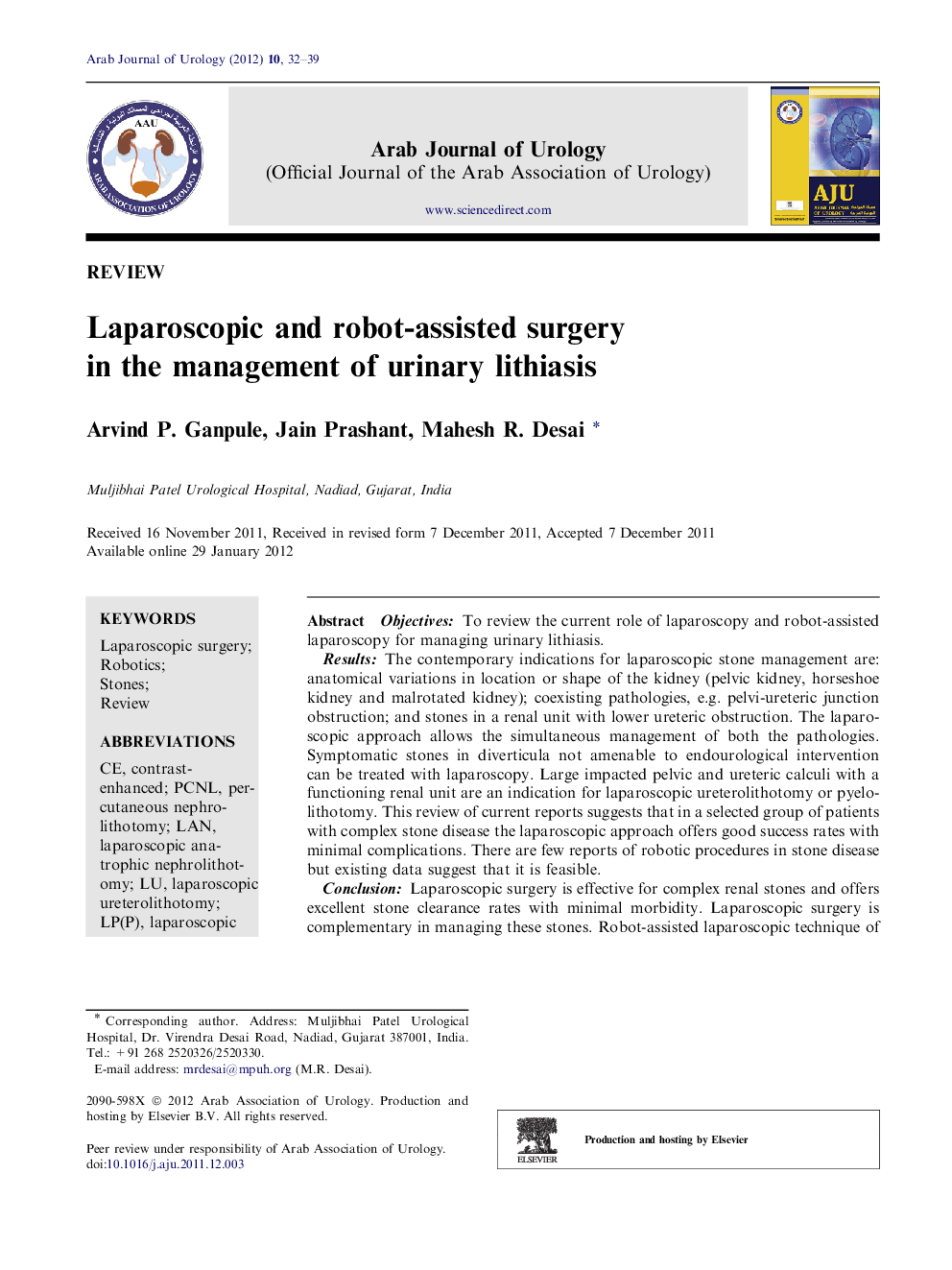| Article ID | Journal | Published Year | Pages | File Type |
|---|---|---|---|---|
| 4268222 | Arab Journal of Urology | 2012 | 8 Pages |
ObjectivesTo review the current role of laparoscopy and robot-assisted laparoscopy for managing urinary lithiasis.ResultsThe contemporary indications for laparoscopic stone management are: anatomical variations in location or shape of the kidney (pelvic kidney, horseshoe kidney and malrotated kidney); coexisting pathologies, e.g. pelvi-ureteric junction obstruction; and stones in a renal unit with lower ureteric obstruction. The laparoscopic approach allows the simultaneous management of both the pathologies. Symptomatic stones in diverticula not amenable to endourological intervention can be treated with laparoscopy. Large impacted pelvic and ureteric calculi with a functioning renal unit are an indication for laparoscopic ureterolithotomy or pyelolithotomy. This review of current reports suggests that in a selected group of patients with complex stone disease the laparoscopic approach offers good success rates with minimal complications. There are few reports of robotic procedures in stone disease but existing data suggest that it is feasible.ConclusionLaparoscopic surgery is effective for complex renal stones and offers excellent stone clearance rates with minimal morbidity. Laparoscopic surgery is complementary in managing these stones. Robot-assisted laparoscopic technique of urinary tract stone management is in its early stage of implementation and randomised trials that compare robot assisted outcomes with other minimally invasive techniques are needed.
